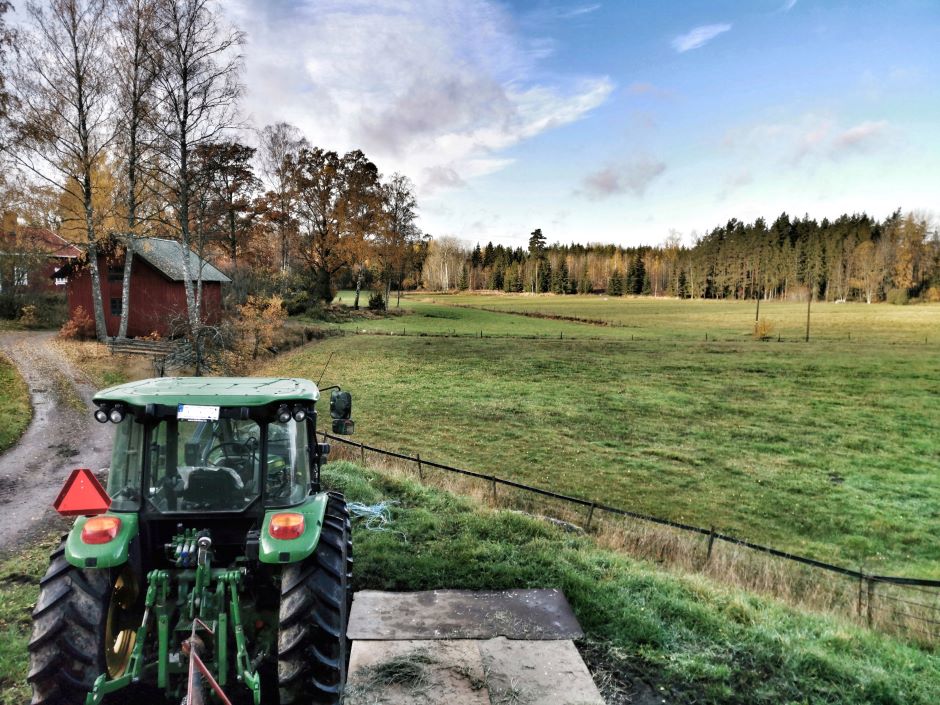If producing cash crops is the main purpose of your farm, you may wonder if there are any easy wildlife management practices you can put into place as well. You don’t want to spend a lot of extra money on them, and you certainly don’t want to take too much time and resources away from your farming.
Luckily, there are some relatively easy and inexpensive things you can do to improve your own hunting experiences or increase the value of a hunting lease on your property. By creating clover buffers, small food plots, strategic paths through your crops, and timber stand improvement, you can mix wildlife management with your farmland crops.
Establish Clover Buffers
Around the perimeter of your existing crops, there is probably a strip of ground that doesn’t produce like the rest of your field. Forest canopies keep sunlight from what’s planted on your field edges, and the paths your tractors and vehicles travel on may not even grow anything. You have to wonder, is it worth your time to plant all the way to a field edge?
You can use your field edges and even maintenance roads to benefit wildlife easily and inexpensively by establishing perennial clover in these areas. Clover is one of the few plants that provide a palatable, high-quality food source to wildlife nearly all year long. A perennial variety comes back year after year, so once it’s established it is relatively easy to maintain.
Frost Seeding Clover
Use a method like frost seeding to start establishing clover when the rest of your farm operations aren’t going full force. In the late winter or early spring, when you still have a few hard freezes in the forecast, broadcast perennial clover seed on top of the ground around your field edges.
As the ground freezes and thaws, the seed will absorb into the ground, and by summer you will start to see a new food source that wildlife love starting to appear. It may take a couple of seasons of frost seeding to see clover take over, but there is minimal maintenance required once it does.

Creating Small Food Plots
Small food plots are great tools for wildlife management practices that put wildlife in predictable areas. This increases hunting opportunities and provides high quality forage. While farming your property, you notice where and how wildlife regularly travel. You likely know where they are during the day and how they get to the areas they like to feed in.
By establishing small food plots in between an animal’s bedding area and your crops, you create a high percentage of hunting area. During deer season, for example, a small food plot not far from a bedding area is a great place to catch deer on their feet in daylight before making it to a larger destination food source (like your crops) after dark.
Keep predominant winds in mind and you can pre-determine stand locations and the plot’s layout to make it as easily accessible as possible. These plots do not need to be large, less than half an acre can be effective. If you clear out a small area of shrubs or trees for this, you aren’t taking anything away from your current amount of tillable land.
Timber Stand Improvement
Any part of your farm that is hardwood forest not being used for agriculture purposes would likely benefit from some type of timber stand improvement. You can benefit wildlife by turning these areas into prime bedding and nesting habitat.
Focus on keeping your mass-producing trees such as oak, walnut, and hickory. Other immature trees, or those that don’t provide any real value to wildlife, can be taken out to open up the canopy and get sunlight to the forest floor.
State foresters and private consultants are available to help you determine a strategy for which trees should stay and which should go on your farm. The goal is to give animals a sense of security by increasing the vegetation that grows up to three feet above the forest floor. This gives deer cover to keep them on your property longer, and it improves nesting habitat for turkeys, rabbits, and other game.

Leave Crop Stubble
After harvesting your crops, leave whatever stubble and organic leftovers there are on the ground as long as possible. This will create great nesting habitat for a number of bird and small game species. Keeping your ground covered will also help prevent erosion. It also gives a chance for decaying matter to release as many nutrients back into the soil as possible.
Strategic Paths Through Existing Crops
This idea falls more under the umbrella of hunting strategy than it does wildlife management. If you have a tall crop like corn where it’s easy for deer and other game to hide behind it, cut a few strategic walking trails. This serves a few purposes: it funnels wildlife movement down more predictable paths, and it makes it easier to hunt these areas.
Having a stand overlooking a long sundarrow in an ag field during rifle season is a great way to get a shot at a lot of deer. They will definitely use those trails, and you can plant a crop like clover on the trails to keep them in your sights a little longer.
Conclusion
Each of these wildlife management practices is meant to increase the opportunities for your wildlife populations to flourish. In doing so, you are also making it more appealing, and expensive, to those who want to lease a hunting property. Without taking away from your land’s ability to produce your cash crop, you can include wildlife management practices. Clover buffers, small food plots, timber stand improvement, purposeful crop harvesting for wildlife, and planned crop design are strategies that will bring more animals to your property.

Leave A Comment